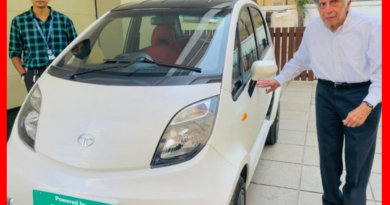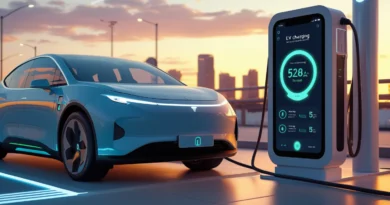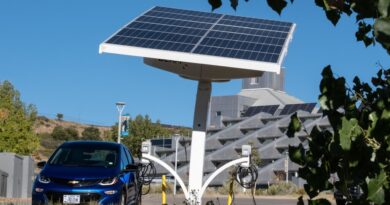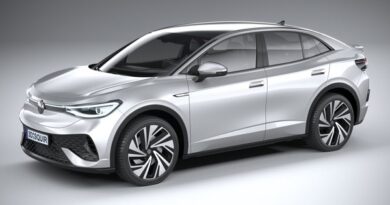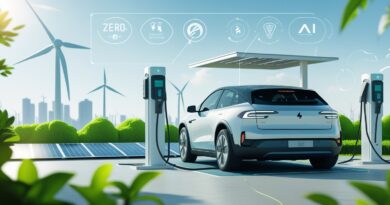The Future of Electric Vehicles: Charging Infrastructure Project
As the world becomes increasingly digitized, we must change how we power our devices. Transportation is one area that is currently being transformed by electrification. Electric vehicles (EVs) are becoming more popular due to technological advancements and a desire for more sustainable living. While EVs offer many benefits over traditional gasoline-powered cars, there is still a need for improved charging infrastructure before they can reach their full potential. Building a better charging infrastructure will provide numerous benefits, including reducing greenhouse gas emissions, improving air quality, and creating jobs.

However, the challenge lies in finding the proper funding and partners to make this happen. A charging infrastructure project is currently being developed that has the potential to provide the clean, reliable, and affordable power needed to charge EVs. With the proper support, this project can help make EVs a reality for more people and contribute to a cleaner, healthier future for us all.
Table of Contents
The Current Situation: Electric Vehicles on the Rise
Electric vehicles (EVs) are becoming an increasingly popular choice for American drivers, as they offer many benefits over traditional gasoline-powered vehicles. However, one of the main challenges facing EVs is the lack of reliable and convenient charging infrastructure. The EV Charging Infrastructure Project is a nationwide effort to build a comprehensive network of EV charging stations so drivers can quickly and safely charge their vehicles. The project is being led by the Department of Energy, with support from various private and public partners. Ultimately, the goal is to make EVs more viable and attractive for drivers and to help reduce our reliance on fossil fuels.
The Need for Improved Charging Infrastructure
Electric vehicles (EVs) are a rapidly growing automotive market segment, with sales increasing by 50% between 2014 and 2015. Despite this growth, many challenges still need to be addressed for EVs to become a mainstream transportation option. There are currently only around 16,000 public charging stations in the United States, and many of those are only compatible with certain types of EVs. This lack of charging infrastructure is one of the main barriers to broader EV adoption. EVs typically require longer to charge than gas cars, so a robust charging infrastructure is essential for drivers to rely on EVs as their primary transportation option.
The Benefits of a Better Charging Infrastructure
Electric vehicles are becoming increasingly popular, as they offer many benefits over traditional gasoline-powered cars. One of the critical barriers to the broader adoption of EVs is the lack of robust charging infrastructure. However, it is beginning to change as governments and private companies invest in EV charging infrastructure projects. There are many benefits to having a better-charging infrastructure for EVs. Perhaps most importantly, it would make it much easier for people to switch to EVs. With a reliable network of charging stations, drivers would not have to worry about being stranded without a charge. It would make EVs a more viable option for many people, as range anxiety is one of the main reasons why some have been hesitant to switch to EVs.
The Challenge of Building a Better Charging Infrastructure
If we are to see a future where electric vehicles (EVs) are commonplace, we must develop a robust and reliable charging infrastructure. It is no small task. Many challenges must be overcome to build a charging infrastructure that can support the needs of EV drivers. One of the biggest challenges is simply the scale of the project. We need to build tens of thousands of charging stations across the country, which takes time, money, and effort. Another challenge is that charging stations need to be located in convenient places, such as nearby shopping centers, workplaces, and other destinations that people frequent.
The Way Forward: A Charging Infrastructure Project
One example is the switch from gas-powered vehicles to electric vehicles (EVs). While EVs are better for the environment and have many other benefits, they require a different type of infrastructure than gas-powered vehicles. It is where the EV Charging Infrastructure Project comes in. The EV Charging Infrastructure Project is a plan to build a network of EV charging stations across the United States. It will make it easier for people to switch to EVs, as they will no longer have to worry about finding a place to charge their car. The project is still in its early stages but is already making progress.
For electric vehicles, 2022 is expected to represent a turning point. Furthermore, as new technologies develop and more businesses adopt electrification, we will start to see the leading players of the EV revolution advance and flourish. As a result, consumers will start to notice significant changes in their mobility options. Why? The capacity for collaboration.
The availability of charging alternatives for consumers will increase because to open networks and driver roaming agreements like GM’s Ultrium arrangement. As a result of these gateway adoptions, drivers will be able to find, use, and pay for charging across numerous networks, paving the path for simple and convenient charging for all motorists. It will become commonplace for drivers to roam.
Although EV charging has advanced considerably, an entire ecosystem of businesses and stakeholders—from utilities to charge station owners and operators to retailers and drivers—must be involved if an electrified future is to be realized.
The EVs Charging Infrastructure Project is a government initiative to promote the use of electric vehicles (EVs) in the United States. The project provides funding for installing EV charging stations across the country. The project is part of the Obama administration’s goal to reduce greenhouse gas emissions and dependence on foreign oil.
Final Thoughts
Electric vehicles are on the rise, and the need for more charging infrastructure comes with that. The government is currently working on a project to install more charging stations across the country. It will benefit both EV owners and the environment.
Scalable public charging necessitates a centralized, web-connected management system. Physical access to charging stations is still necessary. Still, it is less crucial now that maintenance engineers can access charging stations remotely and collect near-real-time analytics and diagnostic data. Therefore, for EV charging to function as a widespread, shared service infrastructure, internet access and technological advancements in software and charging are essential. The connection decisions made today about EVs and charging are establishing the technical groundwork for developing autonomous vehicles in the future.
Conclusion
As the number of electric vehicles on the road continues to rise, the need for improved charging infrastructure becomes more pressing. The benefits of better-charging infrastructure are many, including reduced emissions and increased efficiency. The challenge of building a better charging infrastructure is significant, but it is essential if we are to meet the needs of the growing number of electric vehicle owners. The way forward is a charging infrastructure project that will help ensure that electric vehicles can charge quickly and conveniently wherever possible.


